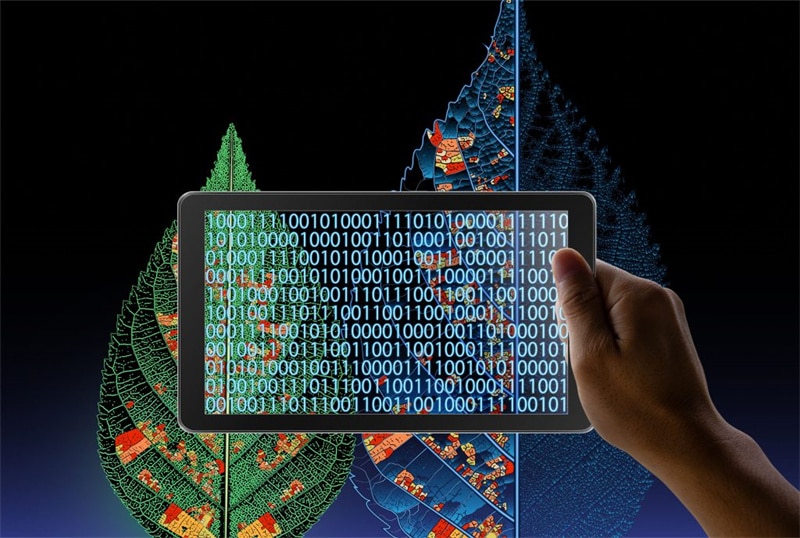
Correctional facilities, commonly known as prisons or jails, play a crucial role in society by incarcerating individuals who have committed crimes. These facilities are responsible for ensuring the security and safety of inmates and staff and facilitating rehabilitation and reintegration into society.
However, managing a correctional facility comes with numerous challenges, including maintaining order, preventing violence, and managing resources efficiently. In recent years, there has been a growing interest in leveraging technology to improve correctional facilities' overall safety and efficiency.
Enhancing Safety through Technology

Enhancing safety in correctional facilities through technology involves implementing various innovative solutions to address the unique security challenges.
According to the Bureau of Justice Statistics, 5,444,900 persons were under the administration of adult correctional facilities in the US in 2021. Overcrowding is the most common problem in such establishments in the US. Due to overcrowding, enhancing safety through the use of proper technology becomes paramount.
One key approach is using advanced surveillance systems, including high-definition cameras and sensors, to monitor inmate activity and detect potential security threats.
These systems can be integrated with analytics software to provide real-time insights and alerts to security personnel. Furthermore, biometric identification methods like fingerprint or iris scanning can bolster security by permitting access solely to authorized individuals.
Another essential measure to enhance safety involves the adoption of electronic monitoring systems, such as GPS ankle bracelets. These systems help track the movement of offenders on parole or probation, reducing the risk of reoffending and improving overall safety.
Integrating these technologies into a comprehensive safety strategy can significantly improve the security and effectiveness of correctional facilities.
Improving Efficiency with Technological Innovations
According to Zipdo, around 56% of all correctional facilities in the US already use electronic monitoring. Also, 70% of parole departments in the US are now using GPS monitoring. By embracing advanced technological innovations, correctional facilities can improve operational efficiency, reduce costs, and ultimately create a safer and more secure environment.
Improving efficiency through technological innovations involves streamlining operations and enhancing communication and management processes. One key technology is the implementation of inmate management systems, which automate and digitize various administrative tasks such as inmate tracking, scheduling, and record-keeping. It not only decreases the chances of mistakes but also allows staff to allocate their time to more crucial responsibilities.
Additionally, digital communication platforms, like secure messaging systems, can facilitate better communication between inmates, staff, and external stakeholders, reducing manual processes. Furthermore, integrating cloud-based storage solutions can improve access to information and enhance data security.
Leveraging Correctional Facility Management Systems
Leveraging correctional facility management systems (CFMS) is crucial for ensuring the efficient operation of correctional facilities.
A correctional facility management system is a comprehensive software solution designed to automate and streamline various aspects. These include inmate management, staff scheduling, inventory management, and reporting.
According to JailCore, by implementing CFMS, correctional facilities can improve efficiency in several ways. For example, CFMS can automate inmate intake processes, reducing paperwork and saving time for staff. It can also help manage inmate populations more effectively by providing real-time data on inmate movements, medical needs, and behavioral patterns. This helps the staff make informed decisions quickly.
CFMS can improve resource allocation by providing insights into the use of facilities and personnel, enabling facilities to optimize operations and reduce costs. Overall, leveraging CFMS is essential for correctional facilities to operate efficiently, maintain security, and ensure the well-being of inmates and staff.
Overcoming Challenges and Implementation Considerations
Overcoming challenges in implementing technology in correctional facilities requires careful consideration of various factors. One significant challenge is integrating new technology with existing systems and infrastructure. Ensuring compatibility and smooth functionality is crucial to prevent disruptions in facility operations.
Another hurdle involves providing adequate training and education for staff to utilize new technologies effectively. It includes training on the operation of the technology itself as well as educating staff on the importance of the technology.
Furthermore, prioritizing the security and confidentiality of data is essential, particularly when deploying technologies that handle sensitive information. Facilities must adhere to applicable regulations and standards to safeguard inmate and staff data.
Additionally, addressing resistance to change among staff and stakeholders is imperative to successful implementation. Proper communication and collaboration are essential to gaining buy-in and support for technological innovations in correctional facilities.
Correctional facilities can successfully integrate technology to improve safety, efficiency, and overall operations by addressing these challenges and considering these implementation considerations.
Future Trends and Opportunities in Technology for Correctional Facilities
The future of technology in correctional facilities holds promising trends and opportunities. One such trend is developing and adopting biometrics for inmate identification and access, enhancing security and reducing the risk of identity fraud.
Additionally, artificial intelligence (AI) and machine learning (ML) algorithms can help predict and prevent security breaches and inmate violence. According to Plural Sight, 20% of organizations will deploy AI in their systems in 2024. Expectantly, AI will also be used in correctional facilities, as 55% of organizations are already planning it.
As per the news published in Government Technology, Florida is already using AI to monitor and transcribe the phone conversations of the 80,000-plus inmates. However, the calls with lawyers, doctors, and religious representatives are exempted from this surveillance. The Florida state has already paid a huge amount for starting its surveillance program.
Virtual reality (VR) and augmented reality (AR) technologies also offer opportunities for inmate education and rehabilitation programs, providing immersive learning experiences. Furthermore, the Internet of Things (IoT) can be leveraged to monitor and manage facility infrastructure, improving efficiency and reducing costs.
Overall, these trends indicate a future where technology plays a crucial role in enhancing security, efficiency, and rehabilitation efforts in correctional facilities.
Ethical and Societal Implications of Technology in Correctional Facilities

The use of technology in correctional facilities raises important ethical and societal implications. One concern is the potential for privacy violations, as technologies such as surveillance systems and biometric identification collect and store sensitive information about inmates.
In addition, there exists a concern regarding the potential bias and discrimination inherent in AI and ML algorithms. These technologies may inadvertently reinforce existing biases present within the criminal justice system.
The use of technology alos brings to light questions about human rights, particularly regarding the use of electronic monitoring and surveillance on inmates. There is a concern about the dehumanizing effect of technology on inmates, as excessive reliance on technology may reduce human interaction and rehabilitation opportunities.
Overall, addressing these ethical and societal implications is crucial to ensure that technology in correctional facilities is used responsibly and ethically. It must also be respecting the rights and dignity of inmates.
Frequently Asked Questions
Doesn't increased use of technology in prisons take away human interaction and worsen inmate rehabilitation?
Increased use of technology in prisons has the potential to reduce human interaction, but it hasn’t worsened inmate rehabilitation. In fact, it has enhanced the rehabilitation programs through innovative educational and vocational training opportunities.
Are there any privacy concerns associated with using technology in correctional facilities?
Yes, there are privacy concerns associated with technology in correctional facilities. Inmates may have a reasonable expectation of privacy in certain areas, and
surveillance can be intrusive. Additionally, data collection and storage raise concerns about misuse of personal information.
How can correctional facilities ensure they're investing in the right technology?
Correctional facilities can ensure this by conducting thorough needs assessments, consulting with experts, and piloting new technologies before full-scale implementation. They should consider factors like reducing recidivism rates, improving safety and security, and enhancing rehabilitation programs. Selecting technologies that seamlessly integrate with current systems and prioritizing user-friendly interfaces for staff are essential factors to consider.
In conclusion, the incorporation of technology into correctional facilities offers both obstacles and possibilities. While there are ethical and societal implications to consider, the potential benefits, including improved safety, efficiency, and rehabilitation efforts, cannot be overlooked.
By carefully addressing these challenges and embracing innovative solutions, correctional facilities can harness the power of technology to create a safer and more efficient environment.










